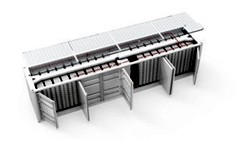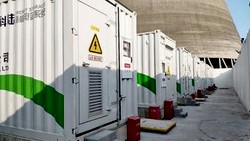Hybrid renewable energy systems are innovative combinations of multiple technologies that have the power to address the intermittent challenges of variable renewable resources like solar and wind. By strategically developing optimized hybrid projects and fostering supportive policies, we can unlock the full potential of clean energy and accelerate the transition to a sustainable future.
The Case for Hybridization
While individual renewable resources such as solar, wind, hydropower, and geothermal energy offer environmental and economic benefits, their inherent variability poses a limitation. Fluctuations in generation due to weather conditions and seasons can hinder the reliability of a single source. This is where hybridization comes into play. By combining two or more complementary technologies, hybrid systems can smooth out these variations and maintain a consistent power output. Studies have shown that hybrid systems can increase capacity factors by 10 – 30 % compared to standalone installations.
Leveraging Synergies
One of the key advantages of hybrid renewable energy systems is their ability to leverage synergies between different technologies. Let's have a look at some real-world examples to illustrate this concept. In remote parts of Hawaii, solar-powered batteries are used to offset the uneven solar-wind conditions, ensuring a more stable power supply. In Iceland, the country harnesses its volcanic geothermal waters and hydropower in tandem to provide a constant baseload supply. Meanwhile, the Atacama Desert in Chile hosts hybrid solar-wind-battery farms that power nearby mines and cities. These examples demonstrate how strategic pairing of technologies can maximize the benefits of hybridization.
Planning for Hybrid Integration
To successfully integrate hybrid systems into existing infrastructure, careful planning is crucial. Advanced modelling tools play a vital role in aiding interconnection planning by simulating the dynamic performance characteristics of hybrid plants under various operating conditions. Grid operators must ensure the safe dispatch of hybrid variable generation, treating them on par with traditional fossil fuel plants. Modern two-way communication and distributed energy management systems help coordinate hybrid facilities with the surrounding transmission infrastructure. Standardized hybrid project certification also assures compatibility with grid codes.
Policy Drivers for Scale Up
While hybrid renewable energy systems offer greater local energy security, upfront capital requirements remain an obstacle to widespread adoption. To overcome this challenge, targeted policy interventions are needed. Appropriate incentive mechanisms and competitive grant programs can stimulate the development of first-of-a-kind projects. Regulatory reforms should encompass hybrid resources in integrated resource planning and competitive procurement processes. Additionally, public-private research consortiums play a vital role in driving innovation in advanced hybrid technologies, monitoring capabilities, and emerging applications like renewable hydrogen production.
Takeaway
Hybrid renewable energy systems hold immense promise in meeting the escalating worldwide electricity demand through carbon-free means. By strategically developing optimized projects, leveraging synergies between technologies, and implementing supportive policies, we can unlock the full potential of hybrid systems and accelerate the clean energy transition.
If you have any inquiries or need further information about our electric energy storage systems as part of the hybrid solution, please do not hesitate to reach out to us. We are here to assist you and welcome your valuable thoughts and comments.
Thank you for reading. Until next time, keep shining bright like a solar panel on a sunny day!





All comments are moderated before being published. Inappropriate or off-topic comments may not be approved.